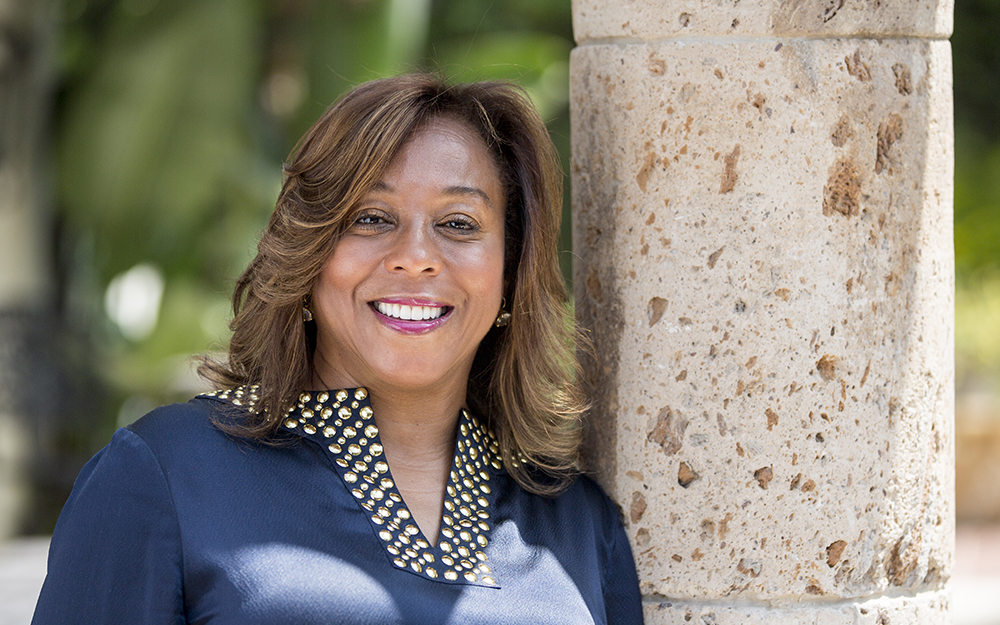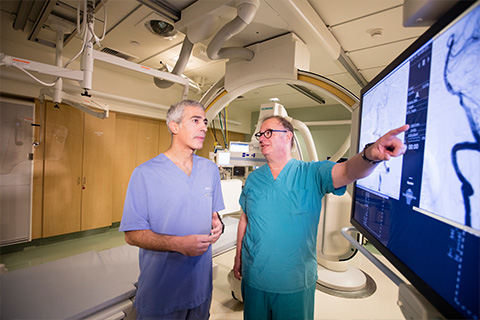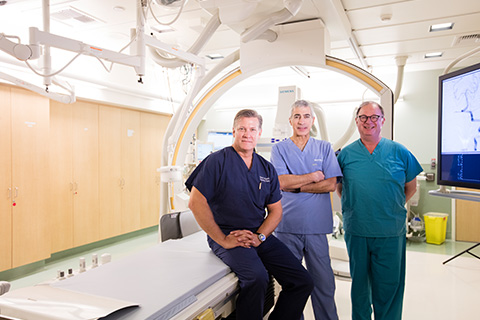Cedars-Sinai Blog
A Race to Find Treatment
Jul 16, 2017 Cedars-Sinai Staff

When Natalia Belle Jacke was lying on the cold marble tile of her bathroom floor unable to move, the first thoughts she had were of her family.
"All I could think about was my husband, my mother and three kids: They still need me," said the 57-year-old, recalling how panic and confusion took hold as the immobility continued. "I kept thinking, 'I'm still young and I have my whole life ahead of me.'
Jacke had just finished an afternoon workout that January day. She washed her face and was getting ready to take a shower – and suddenly collapsed. A large clot had developed in the arteries that feed blood to the brain, and Jacke had a massive ischemic stroke.
Determined to live, Jacke wiggled her body to a landline, used her husband’s shoe to knock down the phone and dialed 911. Her speech was slurred and her tongue felt heavy on the bottom of her mouth. She had lost the vision in her left eye. Jacke gathered every ounce of strength she had in that moment to tell the operator that she believed she was having a stroke.
"Even if a stroke doesn’t kill you, it can devastate you in many terribly disabling ways. With imaging and intervention, we have that ability to change the course of the stroke. That is exciting and rewarding."

Natalia Belle Jacke's life is back to normal, thanks to the expertise of neurointerventionalists at Cedars-Sinai.
Paramedics rushed Jacke to a hospital where she was given tissue plasminogen activator (tPA), a clot-busting drug that can often stop a stroke in its tracks when given in time. Unfortunately, Jacke was among the small percentage of patients for whom tPA is ineffective. It had been three hours since the stroke started, and Jacke’s body was shutting down.
Jacke was only able to move her right pinky finger as the neighboring hospital’s emergency room personnel sought the expertise of Cedars-Sinai’s interventional neuroradiology experts. These specialists work with the multidisciplinary Stroke Program team to perform minimally invasive, image-guided treatment options for patients.
As a Comprehensive Stroke Center, Cedars-Sinai is equipped to handle the most severe, complex and rare stroke cases. The hospital offers the latest imaging technology, therapy and advanced interventional devices, as well as the specialists needed to use that technology to help patients.

Marcel Maya, MD, and Franklin G. Moser, MD, MMM, FACR, are experts in pairing leading-edge imaging technology with exceptional interventional skill.
In Jacke's case, a computed tomography (CT) angiogram image confirmed the tPA had not worked; the clot was still in her neck, blocking the flow of blood to the brain.
Interventional neuroradiologist Marcel Maya, MD, determined the best way to stop the stroke from creating any more physical and mental damage was to surgically remove it. Under X-ray guidance, Maya inserted a very small tube, called a microcatheter,in her groin, threading it up through the blood vessels into her neck. Once there, Maya used the microcatheter to pull out the clot from the brain vessels.
"Even if a stroke doesn’t kill you, it can devastate you in many terribly disabling ways," said Maya. "With imaging and intervention, we have that ability to change the course of the stroke. That is exciting and rewarding."

Michael Alexander, MD, director of the Cedars-Sinai Neurovascular Centers, adds his deep expertise to the already extraordinary skills of Maya and Moser.
Maya and fellow neurointerventionalists, Franklin G. Moser, MD, MMM, FACR, and endovascular neurosurgeon Michael J. Alexander, MD, FACS, have more than 50 years of collective expertise in these types of procedures.
"Being at a Comprehensive Stroke Center such as Cedars-Sinai makes all the difference in providing patients with extra care," Maya said. "We give hope and healing to patients because there is a chance what we do will work. Through imaging, we can clearly see what is going on, and very quickly. The clot in Natalia (Jacke)'s neck was large and would have caused a very different outcome if we hadn't been able to get it out in time."
When a "Code Brain" is called at Cedars-Sinai, the stroke team springs into action, including neuroradiologists, who offer another set of expert eyes and opinions on the best treatment options.


